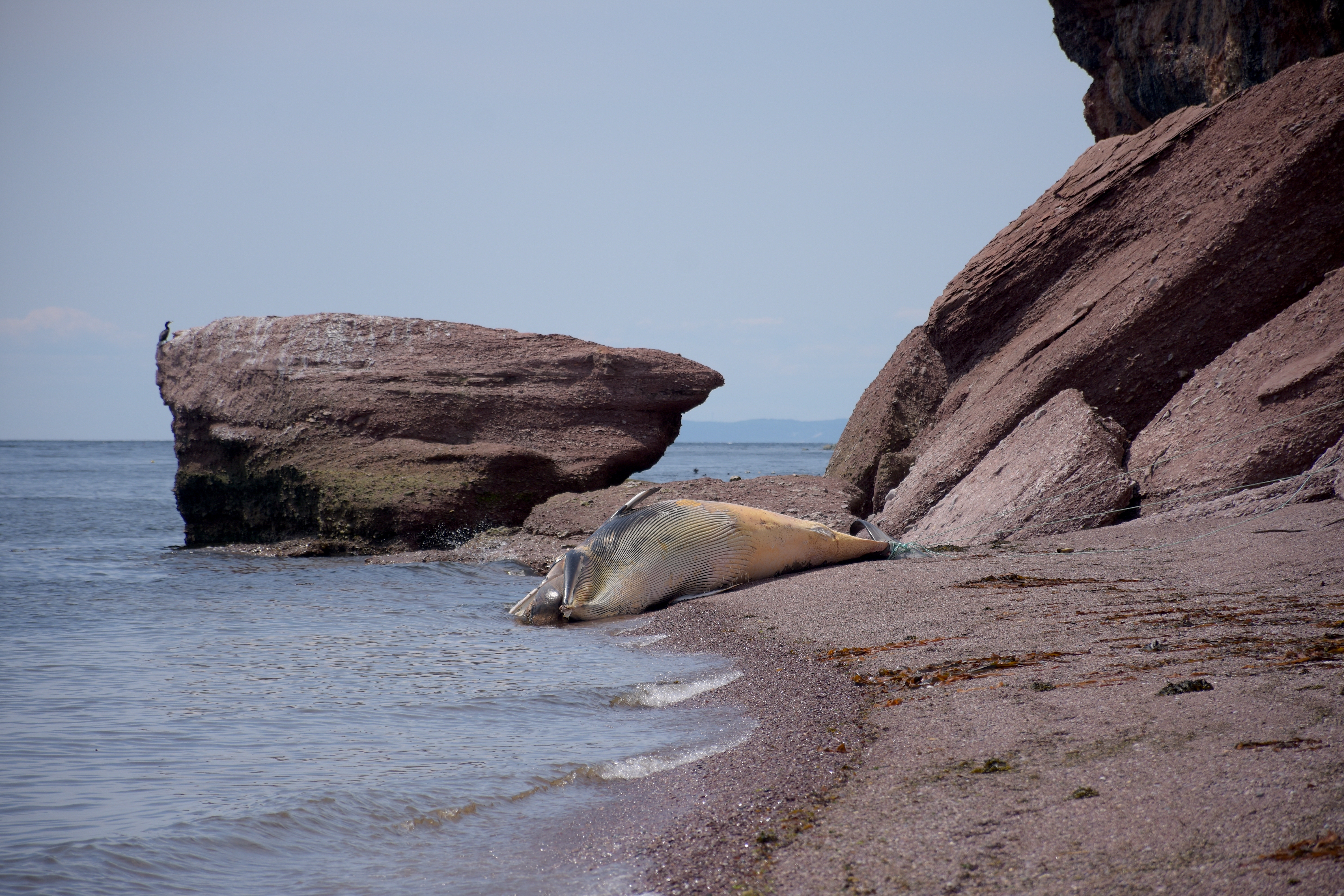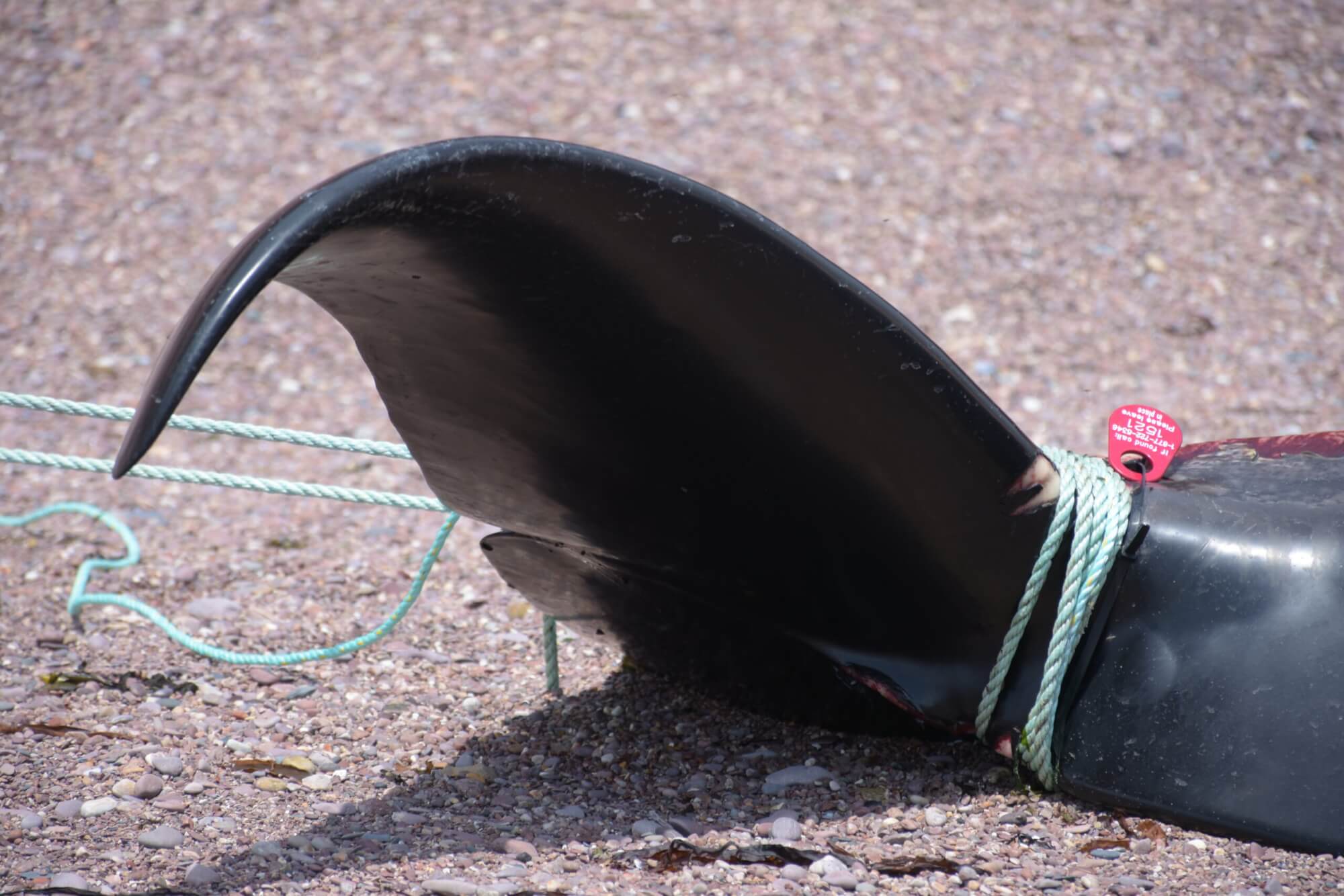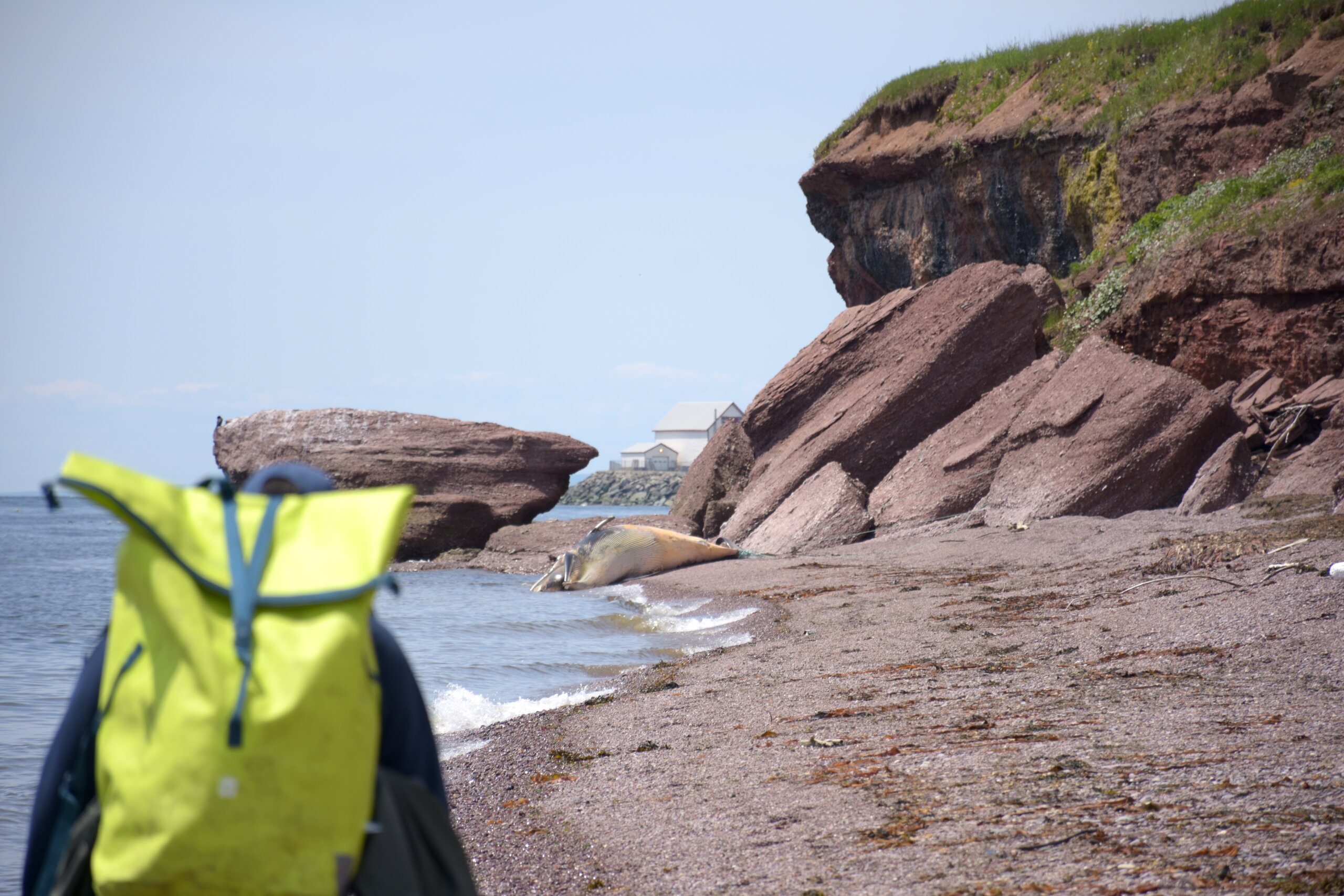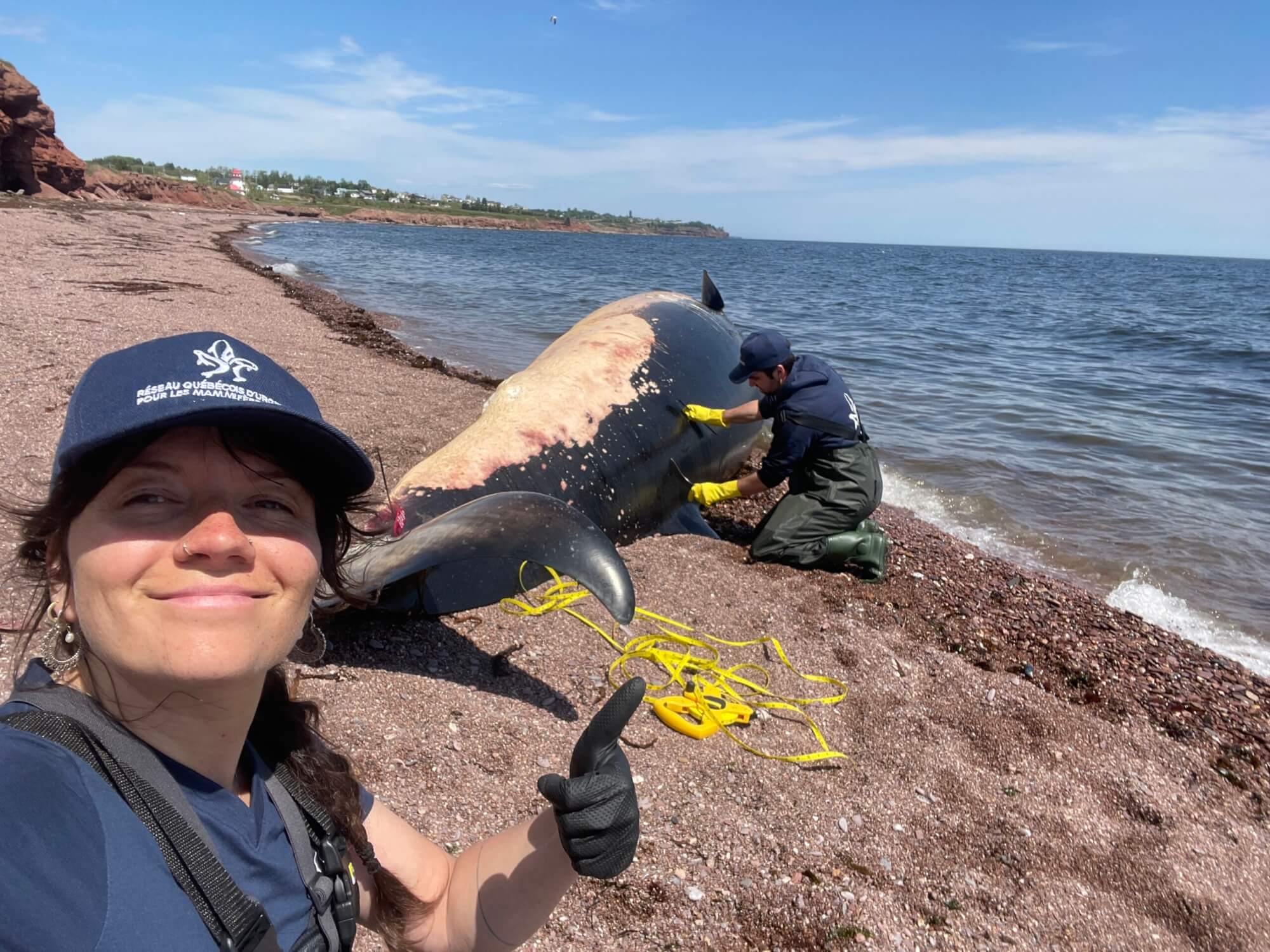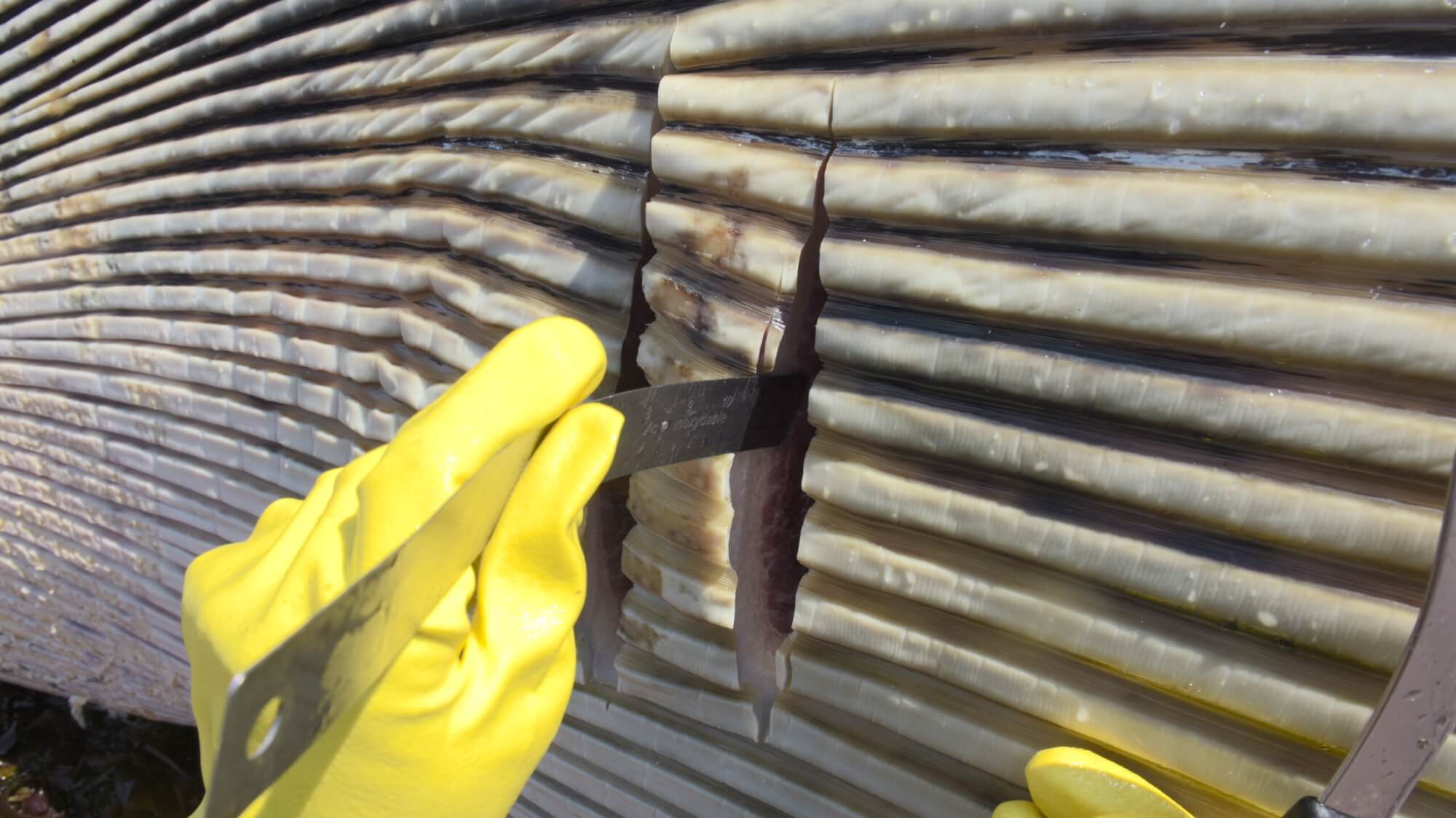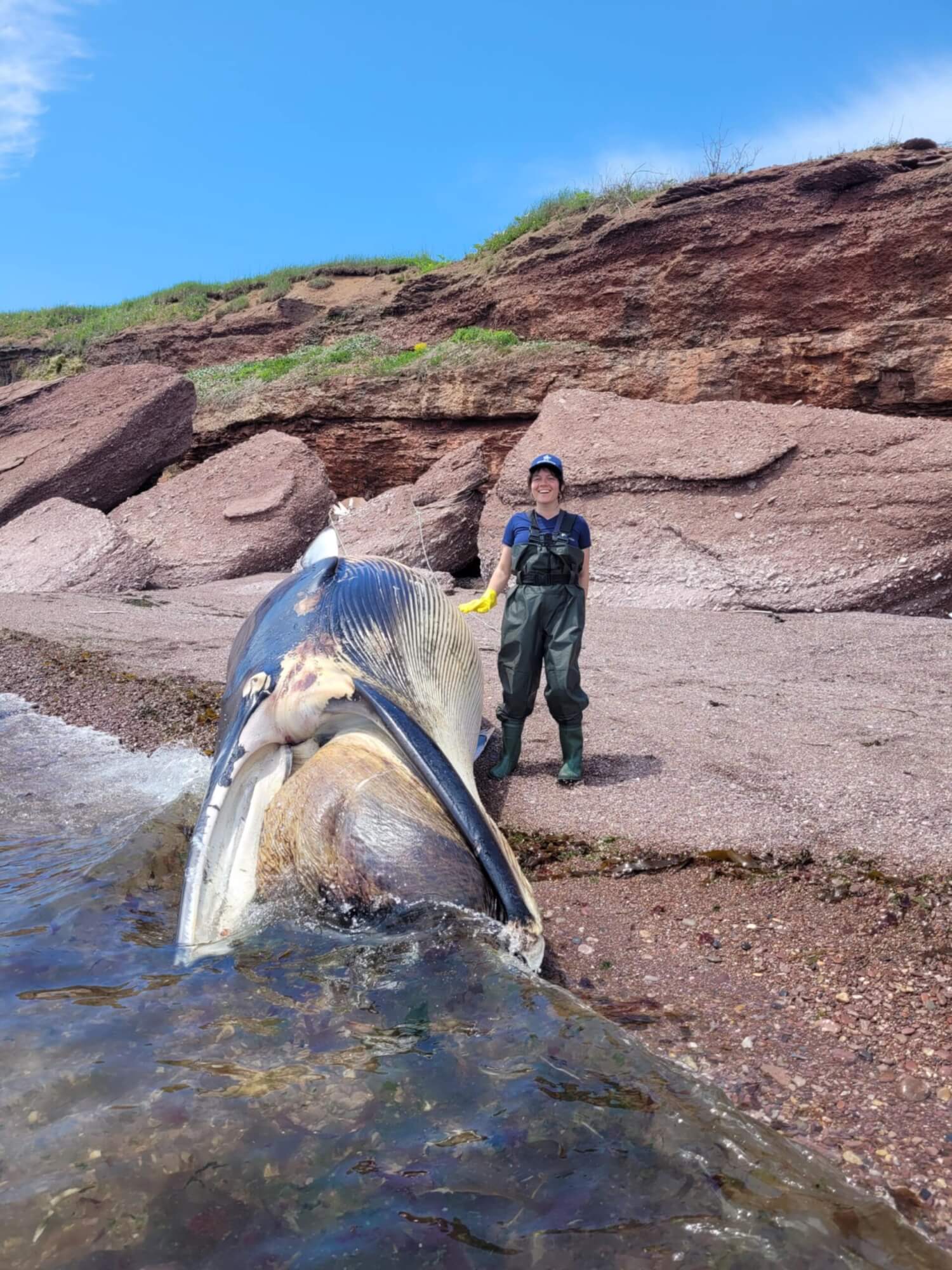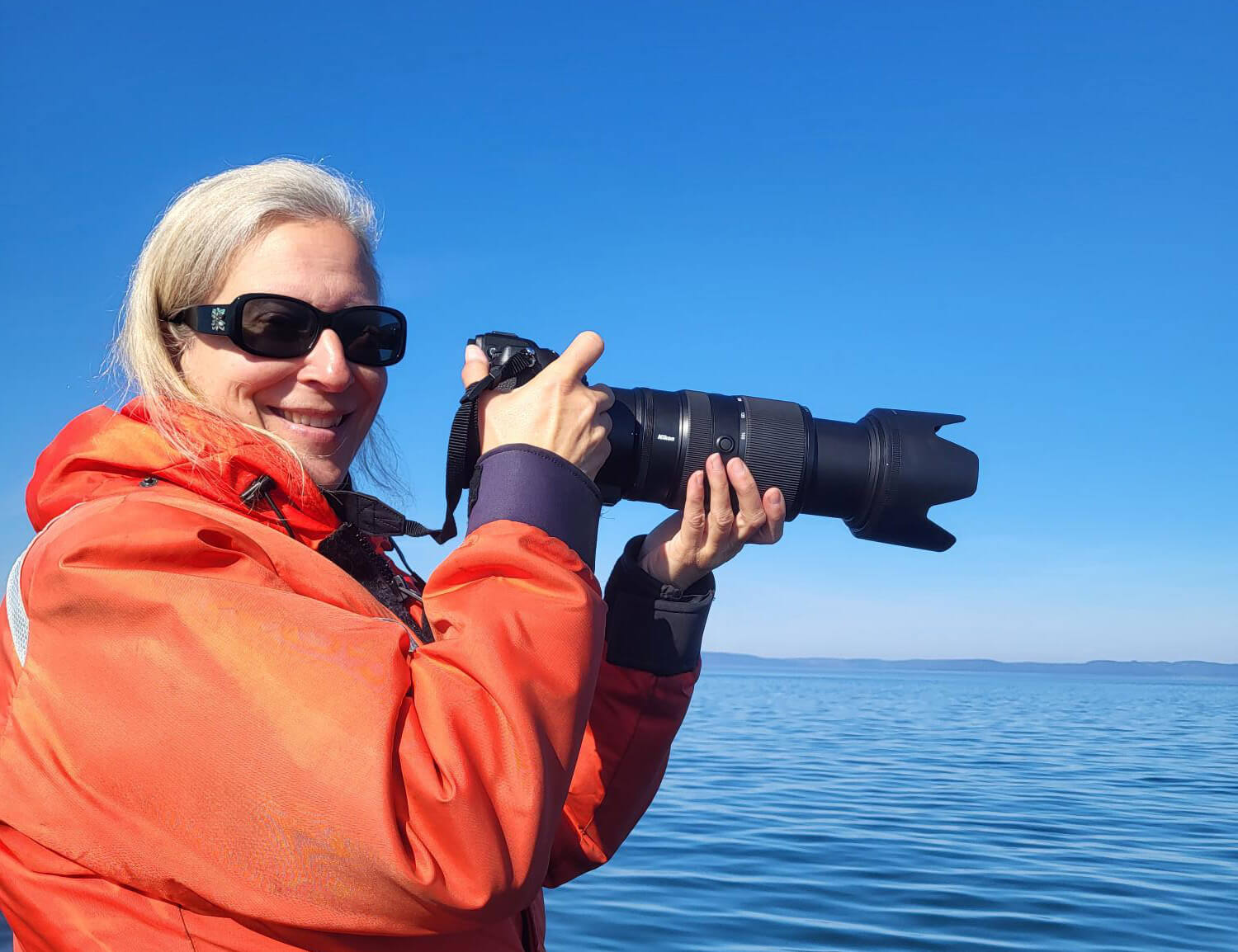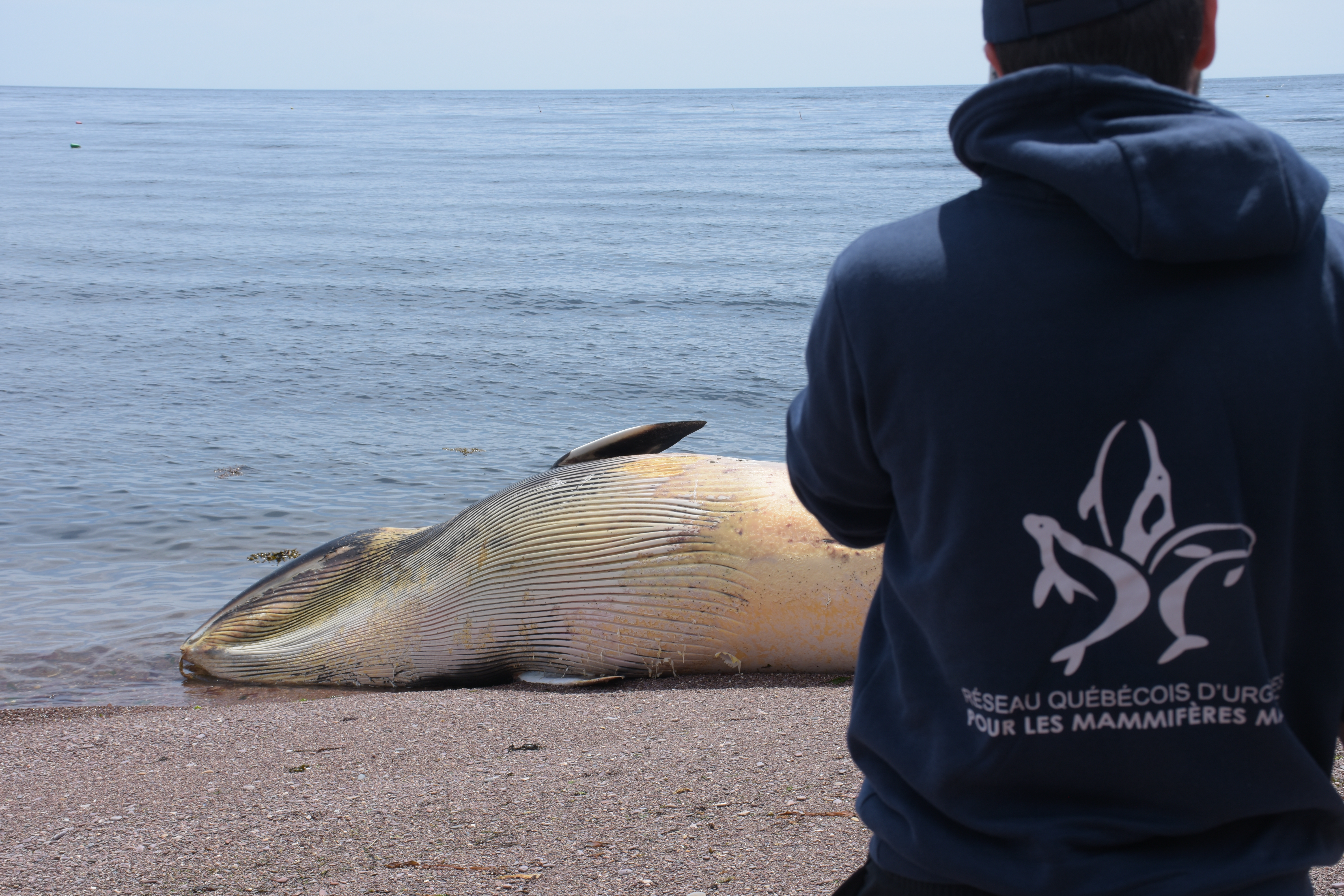From the sea to the shore
At 9:11 a.m. on June 13, my day at QMMERN begins with a call to notify me of a carcass drifting off the coast of Sainte-Thérèse-de-Gaspé. Witnesses on a nearby sailboat provide images that are later used to identify the species: It’s a minke whale! However, as long as the carcass is at sea, the mobile team remains on standby to collect samples.
The next day, a witness reports that the carcass is drifting toward shore near Grande-Rivière. The odds of it washing ashore are high now, so the entire UMM team gets ready to respond. Three hours later, the whale washes up on the beach. As the carcass is too massive to be necropsied at the Faculty of Veterinary Medicine in Saint-Hyacinthe, it is decided to take samples on site. Because this is not a species regulated by the Species at Risk Act (SARA), this minke whale will not undergo a thorough post-mortem analysis. Anytime a carcass is recovered, body size and conservation status are important criteria to be taken into consideration
The South Shore response team is mobilizing to prepare for sampling and a comprehensive documentation of the minke whale. To my surprise, I have the opportunity to join my colleague and assist him throughout the procedure!
Preparation and intervention
Cédric, one of QMMERN’s field technicians, and I load the truck with a whole kit of essential tools for collecting biological material: waterproof waders, nitrile gloves, steel-tipped boots, a plug-in cooler, a camera, and a set of sharp knives. After arranging to meet at 6:00 a.m. on June 15, we set off to find the minke whale. To ensure the carcass remains in place until we arrive, one of our dedicated volunteers secures it with rope and places a custom tag around the base of its peduncle.
At the end of the long journey from Rimouski to the tip of the Gaspé Peninsula, we arrive at the site and spot the minke whale at the base of the distant sandstone cliffs. The carcass is quickly decomposing under the blazing sun, and much work lies ahead.
Meeting
I grab the camera and conduct an external examination of the carcass, starting from the head and slowly working my way toward the hind limbs. It is important to note and photograph any suspicious marks or lesions observed during the macroscopic examination. This documentation is then forwarded to veterinarians to determine the origin of these marks, which can sometimes offer clues as to how the animal died. We take numerous morphological measurements, including maximum circumference, thickness of the caudal fin, and the length from the tip of the rostrum to the notch in the tail.
An unpleasant but essential sampling
Now it’s time to take some samples! Various samples are collected for our partners to contribute to a large number of ongoing research projects. First we remove a piece of skin and blubber using a sharp knife.
From the skin we can extract DNA, which allows us to establish the minke whale’s genetic profile. Fatty tissues, on the other hand, are where lipophilic contaminants are concentrated in cetaceans. This tissue is used to assess the individual’s physical condition and quantify pollutants. Fat is also useful for detecting hormonal residues, which are indicators of the animal’s physiological state and the environmental impact on its health. Next, a piece of muscle is removed, which reveals information about the individual’s diet and the presence of other types of contaminants.
Due to their longevity and their position at the top of the food chain, marine mammals accumulate significant levels of contaminants by means of biomagnification. I walk to the front of the carcass, firmly grasp the minke whale’s jaw with one hand, pick up a knife with the other, and carefully remove a section of the baleen. When harvesting baleen, it is important to cut it at the root, as this is where the DNA is located, which will be extracted once we return to the lab.
Je marche à l’avant de la carcasse, j’agrippe fermement la mâchoire du petit rorqual dans une main, empoigne un couteau dans l’autre, et m’applique à soigneusement retirer une section des fanons. Il est primordial de récolter les fanons jusqu’à la racine, puisque c’est à cet endroit que se situe l’ADN à extraire une fois en laboratoire.
Mission accomplie
After a long day in the field, we pack everything into the cooler and leave the site. A month later, after several reports, the minke whale, which now looks like a mummy, is still lying on the shore. The carcass having become a nuisance for local residents, we call Environnement (MELCCFP) to deal with the situation. In an ideal world, the carcass would be washed out naturally by the tide and carried offshore by the currents. Indeed, a whale carcass that has come to rest on the seabed can help support marine biodiversity by providing benthic fauna with a sustainable source of nutrients.
Lastly, though seemingly gruesome at times, our fieldwork is a reminder of the importance of carefully documenting and sampling each and every marine mammal carcass reported to QMMERN. Every sample not only provides essential clues about the individual’s health, but also the overall state of populations in the St. Lawrence.


